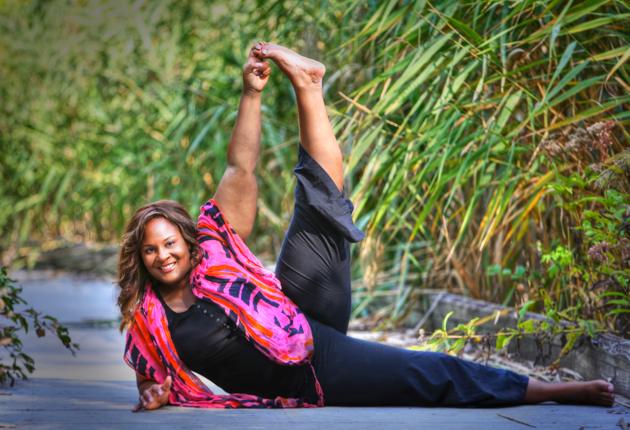The world is a fascinating place and is becoming more culturally diverse all the time. We use the term minority to categorize a group of people who are different from what we consider the norm.
Minority is loaded word. In my understanding it is a label that means less than. This is far from true. Diversity is a word that means more than. The term minority itself creates the idea or a feeling of exclusion. It is time to retire this word.
Diversity is a word that encourages inclusion by illuminating what is different in all of us.
The world is changing rapidly and it is amazing to see. According to the American Census Bureau, “by the end of this decade no single racial or ethnic group will constitute a majority of children” under the age of 18 and in about 30 years no single group of people will represent a majority of the country as a whole.
Cheers to change. It is about time!
Yoga teaches us that we are all one.
The energy and light that resides in all of us comes from the same source. How do we teach the world at large that it is okay to be different and embrace change?
We do that by celebrating our unique selves. We travel to diverse places and experience different cultures through food, music, and social activities. We can also do that by including and encouraging everyone to come to the mat.
Our yoga practice is a true reflection of ourselves.
On our mat, we can be our authentic selves. So many people’s lives have been changed from stepping on their mat and finding their own true heart. Yoga makes us well both physically and emotionally. It makes us more aware of the world around us and more compassionate and accepting of others.
Unfortunately, not everyone feels comfortable practicing yoga or entering a yoga studio.
The media at large has offered us images of yoga that are thin, flexible, female, and, for the most part—white. We rarely see images of different-sized people, different-coloured people, and transgendered people doing yoga.
It is hard to feel included in this cultural phenomenon of yoga when you don’t see yourself in the picture. How do we make yoga really for everyone?
We can offer a safe place on the mat for people of color, for transgendered people, and for people with physical challenges. We are all challenged in our lives in some way—the yoga mat can be the great equalizer. Here are seven ways to make yoga accessible for all.
1. Teach a free yoga class in a community that does not have access to yoga.
It will not only make you a better teacher by testing your teaching skills with new beginning students, it will also open your eyes to diversity. You will see that we are not so different.
2. Learn how to teach beginning students.
Host a beginner level class in your studio, local church hall, or community center. Almost anyone can teach an advanced student a flow, but someone totally new to yoga is a big challenge to teach.
So do your research and pick poses that can be easily modified and encouraging to people. Pick standing poses for beginners. Standing poses are accessible to most all students. It helps to complement their practice. Express the good and positive in each pose for them to tap into their power.
3. Be inclusive in your choices for partner work.
If you are participating in or teaching a yoga class and partner work comes up, chose a partner you have never worked with, someone who is new to the class, or even someone who is culturally different from you. Be the change you want to see in the studio.
4. Use positive inclusive language.
Be careful how you speak. Stay away from language that perpetuates stereotypes or that may be offensive.
5. Teach progressively.
One of the best yoga lessons I’ve ever learned was how to teach progressively using “The Bus Stop Method.” One of my most favourite teachers in the world, Christina Sell taught this method brilliantly. I use it all the time.
“Bus Stop One” is the modified most basic form of the pose and you can add on levels of difficult as bus stop moves down the path. “Bus Stop One” is Table, “Bus Stop Two” would be Down Dog—you get the general idea.
6. Encourage the use of props and demonstrate how to use them properly.
Tell your students that props enhance your poses.
7. Smile, and welcome and include everyone in class.
Yoga is a practice that everyone can do. You just need to meet people where they are. Be kind, be compassionate, and open your mind to the idea that different is really great.
You have the power to change, to inspire, to grow, and to develop a truly inclusive community. It is important to embrace change in all areas of your world. A great place to invite inclusion is the yoga mat.


